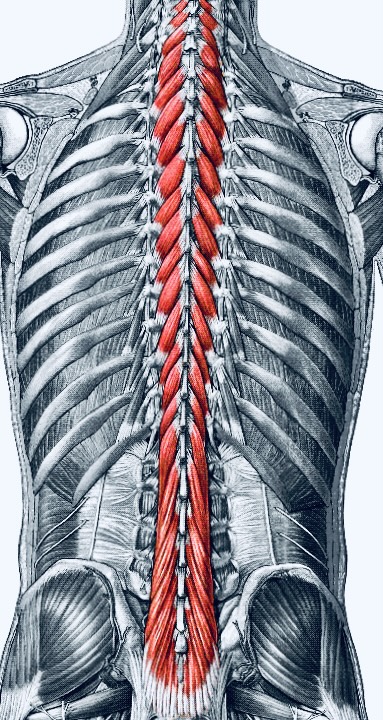The Multifidus Muscle: Your Spine’s Hero — or Villain?
When it comes to maintaining a healthy and resilient spine, there’s one muscle group that has historically gone unnoticed or under appreciated—the multifidus muscle. Deep within the intricate network of muscles in our backs, the multifidus plays an important role in supporting the spine, helping to provide stability and maintain proper posture.
The multifidus is a collection of small, triangular muscles that run along the length of the spine starting from the sacrum at the bottom and extending up along both sides of the spine all the way up to the neck (see the image below). The segments start laterally and then attach to the spinous process above overlapping one another like links in a chain. The multifidus muscle is responsible for some of the intricate movements of the spine, including extension, rotation, and lateral flexion. It plays an essential role in maintaining stability and balance, especially during dynamic movements.

An image of the multifidus muscle forming a chain up and down the sides of the spine.
A number of studies have shed light on the importance of the multifidus muscle. Here are some highlights:
1. Low Back Pain: Research suggests that individuals with chronic low back pain often exhibit multifidus muscle atrophy, fatty infiltration, or impaired activation. Strengthening the multifidus has been shown to alleviate pain and improve function in individuals with low back pain.
2. Spinal Stability: The multifidus muscle contributes significantly to spinal stability, especially in the lumbar region. It acts as an active stabilizer, helping to counteract abnormal movement and maintaining proper alignment.
3. Postural Support: Weakness or dysfunction of the multifidus muscle can compromise postural stability, leading to imbalances and increasing strain on other structures of the spine. Strengthening the multifidus muscle can improve spinal alignment reducing the risk of posture-related pain.
There are some devices coming on the market targeting the multifidus muscle but they are largely experimental at this point. They can also be finicky and a hassle to use and maintain. Some patients may need a device like that, but for most people doing your own multifidus stimulation is best. That is done with a regular exercise program.
You have only got one spine. It has to last your whole life. Investing some time in your spine with an exercise program now will pay dividends down the road. Incorporating exercises that target the multifidus is key to maximizing your spine health for as long as you need a spine.

